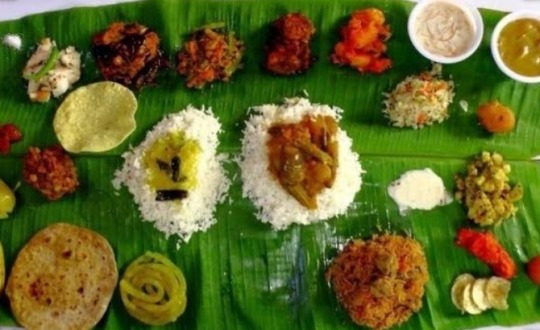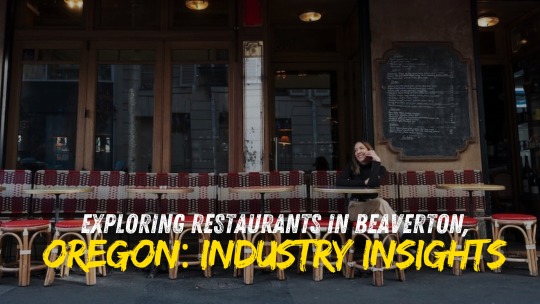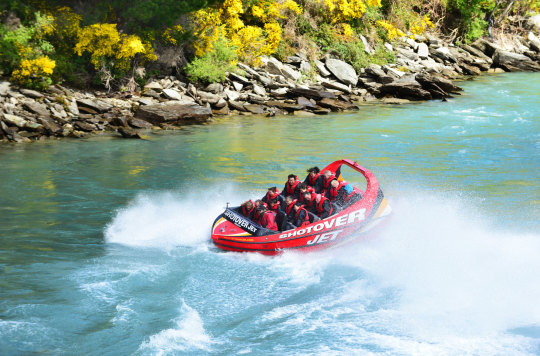#you learn about international cuisine and agriculture
Explore tagged Tumblr posts
Text
!!read moyashimon immediately!!
#the thing is if you want bi/lesbian and transfem rep in your anime diet you really cannot do any better than moyashimon#that shit was decades ahead of its time#and it's also like. good. you learn about microbes and fermented food/drink#you learn about international cuisine and agriculture
14 notes
·
View notes
Text
INDIAN FOODS IN USA

Hi Readers, welcome to indianfoodinusadotcom, Here you can learn all about Indian foods, recipes and all about INDIAN FOOD like {ABOUT INDIAN FOOD}
{HISTORY}
{VEDIC AGES}
{ANTIQUITY}
{FOOD MENTIONED IN ANECIENT INDIAN SCRIPTURE}
{MIDDLE AGE OF 16th CENTURY}
{COLONIAL PERIODS}
{INGREDIENTS}
{RECIPES}
LIKE (a) chicken Biryani (b) mutton biryani (c)Butter chicken (d) chicken tikka masala (e) veg biryani (f) Palak paneer (g) Matar paneer (h) chutneys, AND Many more.
ABOUT INDIAN FOOD in USA
You will get know more about the best restaurants Around the world
INDIAN FOOD consists of a variety of regional and traditional cuisines native to India. Given the diversity in soil, climate, culture, ethnic groups, and occupations, these cuisines vary substantially and use locally available spices, herbs, vegetables, and fruits.
Indian food is also heavily influenced by religion, in particular Hinduism and Islam, cultural choices.
Historical events such as invasions, trade relations, and colonialism have played a role in introducing certain foods to this country. The Columbian discovery of the New World brought a number of new vegetables and fruit to India. A number of these such as potatoes, tomatoes, chillies, peanuts, and guava have become staples in many regions of India.
INDIAN FOOD has shaped the history of international relations; the spice trade between India and Europe was the primary catalyst for Europe's Age of Discovery.
Spices were bought from India and traded around Europe and Asia. INDIAN FOOD has influenced other cuisines across the world, especially those from Europe (especially Britain), the Middle East, Southern African, East Africa, Southeast Asia, North America, Mauritius, Fiji, Oceania, and the Caribbean.
HISTORY OF INDIAN FOOD NON-VEGETARIAN
INDIAN FOOD reflects an 8,000-year history of various groups and cultures interacting with the Indian subcontinent, leading to a diversity of flavors and regional cuisines found in modern-day India. Later, trade with British and Portuguese influence added to the already diverse INDIAN FOOD.
After 9000 BCE, the first period of indirect contact between the Fertile Crescent and Indus Valley civilizations seems to have occurred due to the Neolithic Revolution and the diffusion of agriculture. Around 7000 BCE, agriculture spread from the Fertile Crescent to the Indus Valley, and wheat and barley began to be grown. Sesame and humped cattle were domesticated in the local farming communities.
Mehrgarh is one of South Asia's earliest sites with evidence of farming and herding. From circa 4500 to 1900 BC the rulers of Lower Mesopotamia were Sumerians who spoke a non-Indo-European and non-Semitic language, may have initially come from India and may have been related to the original Dravidian population of India.
By 3000 BCE, turmeric, cardamom, black pepper and mustard were harvested in India.
From Around 2350 BCE the evidence for imports from the Indus to Ur in Mesopotamia have been found, as well as Clove heads which are thought to originate from the Moluccas in Maritime Southeast Asia were found in a 2nd millennium BC site in Terqa. Akkadian Empire records mention timber, carnelian and ivory as being imported from Meluhha by Meluhhan ships, Meluhha being generally considered as the Mesopotamian name for the Indus Valley Civilization.
VEDIC AGE
VEGETARIAN
The ancient Hindu text Mahabharata mentions rice and vegetable cooked together, and the word "pulao" or "pallao" is used to refer to the dish in ancient Sanskrit works, such as Yājñavalkya Smṛti. Ayurveda, ancient Indian system of wellness, deals with holistic approach to the wellness, and it includes food, dhyana (meditation) and yoga.
ANTIQUITY
Early diet in India mainly consisted of legumes, vegetables, fruits, grains, dairy products, and honey.
Staple foods eaten today include a variety of lentils (dal), whole-wheat flour (aṭṭa), rice, and pearl millet (bājra), which has been cultivated in the Indian subcontinent since 6200 BCE.
Over time, segments of the population embraced vegetarianism during the Śramaṇa movement while an equitable climate permitted a variety of fruits, vegetables, and grains to be grown throughout the year.
A food classification system that categorised any item as saatvic, raajsic, or taamsic developed in Yoga tradition. The Bhagavad Gita proscribes certain dietary practices.
Consumption of beef is taboo, due to cows being considered sacred in Hinduism.[14] Beef is generally not eaten by Hindus in India except for Kerala, parts of southern Tamil Nadu and the north-east.
PICKLES
FOOD MENTIONED IN ANECIENT INDIAN SCRIPTURE
While many ancient Indian recipes have been lost in history, one can look at ancient texts to see what was eaten in ancient and pre-historic India.
Barley—(known as Yava in both Vedic and Classical Sanskrit) is mentioned many times in Rigveda and other Indian scriptures as one of the principal grains in ancient India
Betel leaf—primary use is as a wrapper for the chewing of areca nut or tobacco, where it is mainly used to add flavour; may also be used in cooking, usually raw, for its peppery taste
Breadfruit—fritters called jeev kadge phodi in Konkani or kadachakka varuthath in Malayalam are a local delicacy in coastal Karnataka and Kerala
Chickpeas—popular dishes are made with chickpea flour, such as mirchi bajji and mirapakaya bajji
Curd—a traditional yogurt or fermented milk product, originating from the Indian subcontinent, usually prepared from cow's milk, and sometimes buffalo milk, or goat milk
Figs —cultivated from Afghanistan to Portugal, also grown in Pithoragarh in the Kumaon hills of India; from the 15th century onwards, also grown in areas including Northern Europe and the New World
Ghee—a class of clarified butter that originated in ancient India, commonly used in the Indian subcontinent, Middle-Eastern cuisine, traditional medicine, and religious rituals
Grape wine —first-known mention of grape-based wines in India is from the late 4th-century BC writings of Chanakya
Honey —the spiritual and supposed therapeutic use of honey in ancient India was documented in both the Vedas and the Ayurveda texts
Mango—the Jain goddess Ambika is traditionally represented as sitting under a mango tree
Mustard —brown mustard is a spice that was cultivated in the Indus Valley civilization and is one of the important spices used in the Indian subcontinent today
Pomegranate—in some Hindu traditions, the pomegranate (Hindi: anār) symbolizes prosperity and fertility, and is associated with both Bhoomidevi (the earth goddess) and Lord Ganesha (the one fond of the many-seeded fruit)
Rice—cultivated in the Indian subcontinent from as early as 5,000 BC
Rice cake—quite a variety are available
Rose apple—mainly eaten as a fruit and also used to make pickles (chambakka achar)
Saffron —almost all saffron grows in a belt from Spain in the west to Kashmir in the east
Salt —considered to be a very auspicious substance in Hinduism and is used in particular religious ceremonies like house-warmings and weddings; in Jainism, devotees lay an offering of raw rice with a pinch of salt before a deity to signify their devotion, and salt is sprinkled on a person's cremated remains before the ashes are buried
Sesame oil —popular in Asia, especially in Korea, China, and the South Indian states of Karnataka, Andhra Pradesh, and Tamil Nadu, where its widespread use is similar to that of olive oil in the Mediterranean
Sorghum—commonly called jwaarie, jowar, jola, or jondhalaa, sorghum is one of the staple sources of nutrition
Sugar—produced in the Indian subcontinent since ancient times, its cultivation spread from there into modern-day Afghanistan through the Khyber Pass
Sugarcane—the earliest known production of crystalline sugar began in northern India; the earliest evidence of sugar production comes from ancient Sanskrit and Pali texts
Turmeric —used widely as a spice in South Asian and Middle Eastern cooking
Middle Ages to the 16th Century
VEG DUM BIRYANI
During the Middle Ages, several Indian dynasties were predominant, including the Gupta dynasty. Travel to India during this time introduced new cooking methods and products to the region, including tea.
India was later invaded by tribes from Central Asian cultures, which led to the emergence of Mughlai cuisine, a mix of Indian and Central Asian cuisine. Hallmarks include seasonings such as saffron.
Colonial Period
The Portuguese and British during their rule introduced cooking techniques such as baking, and foods from the New World and Europe.
The new-world vegetables popular in cuisine from the Indian subcontinent include tomato, potato, sweet potatoes, peanuts, squash, and chilli. Most New World vegetables such as sweet potatoes, potatoes, Amaranth, peanuts and cassava based Sago are allowed on Hindu fasting days. Cauliflower was introduced by the British in 1822. In the late 18th/early 19th century, an autobiography of a Scottish Robert Lindsay mentions a Sylheti man called Saeed Ullah cooking a curry for Lindsay's family. This is possibly the oldest record of INDIAN FOOD in the United Kingdom.
INGREDIENTS
Staple foods of INDIAN FOOD include pearl millet (bājra), rice, whole-wheat flour (aṭṭa), and a variety of lentils, such as masoor (most often red lentils), tuer (pigeon peas), urad (black gram), and moong (mung beans). Lentils may be used whole, dehusked—for example, dhuli moong or dhuli urad—or split. Split lentils, or dal, are used extensively, Some pulses, such as channa or cholae (chickpeas), rajma (kidney beans), and lobiya (black-eyed peas) are very common, especially in the northern regions. Channa and moong are also processed into flour (besan).
Many Indian dishes are cooked in vegetable oil, but peanut oil is popular in northern and western India, mustard oil in eastern India, and coconut oil along the western coast, especially in Kerala and parts of southern Tamil Nadu, Gingelly (sesame) oil is common in the south since it imparts a fragrant, nutty aroma.
In recent decades, sunflower, safflower, cottonseed, and soybean oils have become popular across India, Hydrogenated vegetable oil, known as Vanaspati ghee, is another popular cooking medium, Butter-based ghee, or deshi ghee, is used commonly.
Many types of meat are used for Indian cooking, but chicken and mutton tend to be the most commonly consumed meats. Fish and beef consumption are prevalent in some parts of India, but they are not widely consumed except for coastal areas, as well as the north east.
The most important and frequently used spices and flavourings in INDIAN FOOD are whole or powdered chilli pepper (mirch, introduced by the Portuguese from Mexico in the 16th century), black mustard seed (sarso), cardamom (elaichi), cumin (jeera), turmeric (haldi), asafoetida (hing), ginger (adrak), coriander (dhania), and garlic (lasoon).
One popular spice mix is garam masala, a powder that typically includes seven dried spices in a particular ratio, including black cardamom, cinnamon (dalchini), clove (laung), cumin (jeera), black peppercorns, coriander seeds and anise star.
Each culinary region has a distinctive garam masala blend—individual chefs may also have their own. Goda masala is a comparable, though sweet, spice mix popular in Maharashtra. Some leaves commonly used for flavouring include bay leaves (tejpat), coriander leaves, fenugreek (methi) leaves, and mint leaves. The use of curry leaves and roots for flavouring is typical of Gujarati and South INDIAN FOOD.
2 notes
·
View notes
Text
Dried Apricots Production in Dried Apricots Factory
Dried Apricots Production: A Specialty of Malatya
Malatya, a city located in the heart of Turkey, is renowned worldwide as the capital of dried apricot production. Thanks to its ideal climate and fertile soil, this region produces some of the finest apricots globally. Our company takes pride in continuing this tradition, offering premium dried apricots that meet the highest quality standards.
Dried Apricots Factory: Ensuring Excellence
Our dried apricot factory is equipped with state-of-the-art technology to ensure every product we deliver meets international standards. From the selection of raw apricots to the final packaging, every step is meticulously monitored to maintain superior quality. Our commitment to excellence has positioned us as a trusted supplier of dried apricots for customers worldwide.
The Production Process
The production of dried apricots begins with handpicking the finest apricots from Malatya's orchards. These apricots are then carefully washed, sorted, and dried under controlled conditions to preserve their natural flavor and nutrients. Whether sun-dried or processed using modern drying techniques, our methods prioritize sustainability and quality.
Why Choose Malatya Dried Apricots?
Malatya dried apricots are known for their:
Superior Quality: Grown in the nutrient-rich soil of Malatya, these apricots are naturally sweet and flavorful.
Health Benefits: Packed with vitamins, minerals, and fiber, dried apricots are a nutritious snack choice.
Versatility: Perfect for snacking, baking, or cooking, they are a staple in many cuisines.
Global Reputation: Malatya’s unique microclimate and agricultural practices ensure a distinctive taste that is hard to replicate elsewhere.
Exporting Malatya’s Finest to the World
As a leading dried apricots factory, we export our products to countries across Europe, the Americas, Asia, and beyond. Our extensive experience in international trade enables us to meet diverse customer demands while adhering to global quality and safety standards.
Commitment to Sustainability
We are dedicated to sustainable practices, ensuring that our production processes respect the environment and support local communities. By investing in eco-friendly technology and fair labor practices, we aim to contribute positively to both our industry and society.
Partner with Us
If you are looking for a reliable supplier of premium dried apricots, look no further. With our unparalleled expertise, cutting-edge factory, and dedication to quality, we are ready to meet your needs. Partner with us and bring the best of Malatya’s dried apricots to your customers.
Contact us today to learn more about our products and services. Together, we can share the rich taste and tradition of Malatya dried apricots with the world.
ℹ️For more İnfo :
📞 : 0090 5399284971 ( whatsapp )
0 notes
Text
Zanzibar 7 Days Tour: A Paradise Adventure Awaits
If you're dreaming of a tropical getaway, Zanzibar is the destination that should be on your bucket list. With its pristine beaches, rich culture, historic sites, and abundant wildlife, a 7-day tour in Zanzibar offers the perfect blend of relaxation and exploration. Whether you're looking to unwind on white sandy beaches, dive into the island's history, or experience its vibrant local culture, Zanzibar has something for everyone.
Here’s everything you need to know about what to expect from an unforgettable Zanzibar 7 Days Tour!
Day 1: Arrival and Introduction to Zanzibar
Your adventure begins as you arrive at Zanzibar’s international airport. Upon arrival, you'll be transferred to your hotel where you’ll check in and relax. After settling in, spend the day exploring the local area or enjoying a welcome dinner with a taste of Zanzibar’s flavorful cuisine.
Suggested Activities:
Relax by the beach
Explore your resort or hotel surroundings
Visit a local café for traditional Zanzibar dishes like "Zanzibar pilau" or "samosas"
Day 2: Stone Town Tour - Zanzibar's Historic Heart
Start your day with a guided tour of Stone Town, a UNESCO World Heritage Site. This historic town is the cultural heart of Zanzibar, filled with narrow winding streets, ancient buildings, and markets. You’ll visit the House of Wonders, the Palace Museum, and the Old Fort, all of which tell the story of Zanzibar’s diverse heritage.
Highlights:
The Spice Tour: Zanzibar is known as the "Spice Island." A spice tour will take you to plantations where you’ll learn about the island’s exotic spices such as cloves, nutmeg, and cinnamon.
Stone Town Markets: Stroll through bustling markets, perfect for picking up local crafts, spices, and souvenirs.

Day 3: Spice Farm and Jozani Forest Tour
On your third day, discover the rich agricultural history of Zanzibar with a visit to one of the island’s spice farms. The tour provides an interactive experience, where you’ll not only see how spices are grown, but also get the chance to taste them fresh from the plants.
Next, visit Jozani Forest, home to the famous Zanzibar red colobus monkeys. This tropical forest reserve offers a peaceful walk through lush greenery, with the chance to spot some of Zanzibar’s native wildlife.
Suggested Activities:
Spice tasting and shopping
Nature walk in Jozani Forest
Wildlife spotting
Day 4: Day Trip to Prison Island and Sandbanks
Take a boat trip to Prison Island, a historical site that once housed prisoners and now serves as a sanctuary for giant tortoises. You’ll explore the island's old buildings and enjoy time with the tortoises before heading to a nearby sandbank for some relaxation.
Spend the afternoon swimming, snorkeling, or simply basking in the sun on the sandbank. This secluded spot is perfect for unwinding and enjoying the natural beauty of Zanzibar’s waters.
Highlights:
Giant Tortoise Sanctuary
Snorkeling and swimming in crystal-clear waters
Day 5: Relax at Nungwi Beach
After a few days of exploring, it's time to unwind at one of Zanzibar’s most beautiful beaches—Nungwi Beach. Located on the northern tip of the island, Nungwi is renowned for its clear blue water, powdery white sand, and vibrant coral reefs.
You can spend your day enjoying water activities such as snorkeling, diving, or simply relaxing on the beach with a cocktail in hand.
Suggested Activities:
Snorkeling or diving in Nungwi
Sunset dhow cruise
Beach relaxation

Day 6: Safari Blue Experience and Sandbank Picnic
On day six, embark on the Safari Blue Experience—a boat tour around the Menai Bay Conservation Area, one of Zanzibar’s most stunning coastal regions. You'll stop for snorkeling at coral reefs, visit uninhabited islands, and enjoy a fresh seafood lunch on a secluded sandbank.
The day is a perfect blend of adventure and relaxation, with plenty of time to explore the pristine waters, have a picnic, and spot local marine life.
Highlights:
Snorkeling with tropical fish
Island hopping and sandbank picnic
Enjoying fresh seafood
Day 7: Departure
On your final day, take the time to relax, pack, and soak in the last moments of Zanzibar’s beauty. Depending on your flight schedule, you may have a few more hours to enjoy a relaxing walk along the beach or explore any last-minute attractions in Stone Town before heading to the airport.
Why Take the Zanzibar 7-Day Tour?
A 7-day Zanzibar tour offers a perfect balance of adventure, culture, and relaxation. Whether you're an adventurous traveler looking to explore the rich history of the island, a nature enthusiast eager to see Zanzibar’s wildlife, or simply someone who wants to unwind on idyllic beaches, this tour caters to all types of travelers.
Highlights of the Zanzibar 7-Day Tour:
Rich cultural and historical experiences
Exploring the pristine beaches and clear waters
Snorkeling, diving, and wildlife encounters
Experiencing local Zanzibar cuisine
A perfect combination of relaxation and adventure
Conclusion
Zanzibar offers an unforgettable experience for every traveler. Whether you’re immersed in the island's history, relaxing on its beaches, or discovering its vibrant marine life, the Zanzibar 7-Day Tour is the perfect way to experience all that this tropical paradise has to offer.
Book your Zanzibar tour today and get ready for an adventure of a lifetime in one of the most stunning destinations in Africa!
0 notes
Link
0 notes
Text
Savor the Flavors: Exploring Food and Beverage Services in Kenya
Kenya, renowned for its stunning landscapes and rich cultural heritage, is also a haven for food enthusiasts and beverage connoisseurs. The country's diverse culinary scene reflects its vibrant traditions and global influences, offering a delightful array of flavors and dining experiences. Whether you're a local resident or a visitor, food and beverage services in Kenya provide an opportunity to explore an exciting spectrum of tastes and textures. Here’s a guide to the dynamic food and beverage landscape in Kenya and what makes it so special.
The Rich Culinary Heritage of Kenya
Kenyan cuisine is a melting pot of indigenous ingredients and cultural influences. Each region boasts its own unique flavors and dishes, creating a rich tapestry of culinary traditions. From the coastal swahili dishes to the hearty fare of the highlands, Kenya’s food scene offers something for every palate.

1. Traditional Kenyan Cuisine
Traditional dishes like ugali (a maize-based staple), nyama choma (grilled meat), and sukuma wiki (collard greens) are central to Kenyan dining. These dishes are often enjoyed in local eateries and serve as a testament to Kenya's rich agricultural heritage.
2. Coastal Delights
The coastal region, influenced by Swahili culture, offers seafood dishes such as prawns, fish curry, and biryani. These dishes are seasoned with aromatic spices and herbs, reflecting the diverse flavors of the Indian Ocean coastline.
3. Highland Flavors
In the highlands, you'll find hearty dishes like nyama na irio (beef stew with mashed peas and potatoes) and kuku choma (grilled chicken). These meals are often enjoyed in a communal setting, highlighting the importance of shared dining in Kenyan culture.
Diverse Food and Beverage Services
Kenya’s food and beverage services cater to a wide range of tastes and preferences, from traditional eateries to upscale dining experiences. Here’s a look at what you can expect:
1. Restaurants and Cafés
Kenya is home to a variety of restaurants and cafés that offer both local and international cuisine. Whether you’re craving a traditional Kenyan meal or a gourmet international dish, you'll find options ranging from casual dining spots to high-end establishments.
2. Street Food
Street food is an integral part of Kenyan culture, offering affordable and delicious options like mandazi (fried dough pastries), samosas, and choma (grilled meat). Street vendors provide a vibrant and flavorful culinary experience that captures the essence of Kenya's food culture.
3. Hotels and Resorts
Many hotels and resorts in Kenya offer exceptional dining experiences with stunning views and top-notch service. These establishments often feature a mix of local and international dishes, providing a luxurious dining experience for guests.
4. Bakeries and Patisseries
Kenyan bakeries and patisseries offer a range of baked goods, from traditional mandazi and chapati to gourmet pastries and cakes. These sweet and savory treats are perfect for a light snack or a special occasion.
5. Bars and Nightlife
Kenya's vibrant nightlife scene includes a range of bars and lounges where you can enjoy refreshing beverages, cocktails, and live music. From upscale cocktail bars to casual pub settings, there’s something for everyone.
Embracing Kenya’s Beverage Culture
Kenya’s beverage culture is as diverse as its food scene, offering a range of refreshing drinks and unique flavors:
1. Coffee
Kenya is renowned for its high-quality coffee, with beans that are rich in flavor and aroma. Visit local coffee shops to enjoy a freshly brewed cup of Kenyan coffee, or explore coffee farms to learn about the coffee production process.
2. Tea
Kenyan tea is another highlight, with varieties such as black tea and herbal infusions. Tea is often enjoyed with milk and sugar, and it’s a staple in many Kenyan households.
3. Local Brews
Traditional beverages like ajon (a millet beer) and changa (a homemade alcoholic drink) offer a glimpse into Kenya’s indigenous brewing traditions. These drinks are typically enjoyed in social settings and are an important part of local celebrations.
4. Fresh Juices and Smoothies
Kenya’s tropical fruits provide the perfect base for refreshing juices and smoothies. Enjoy blends made from mangoes, pineapples, and passion fruits, which are both nutritious and delicious.
Tips for Enjoying Food and Beverages Services in Kenya
Explore Local Markets Visit local markets to experience the vibrant flavors of Kenyan street food and fresh produce. Markets are also a great place to interact with locals and immerse yourself in the cultural experience.
Try Regional Specialties Each region in Kenya has its own culinary specialties. Take the opportunity to try regional dishes and discover the unique flavors of different parts of the country.
Embrace the Dining Experience Dining in Kenya often involves communal eating and sharing meals with others. Embrace this aspect of the culture by participating in communal dining experiences and enjoying the social aspect of eating.
Stay Hydrated The climate in Kenya can be quite warm, so be sure to stay hydrated by drinking plenty of water and enjoying refreshing beverages.

Be Open to New Flavors Kenya’s food scene is diverse and full of unique flavors. Be open to trying new dishes and beverages, and you may discover new favorites along the way.
Conclusion Kenya’s food and beverage services offer a rich and diverse culinary experience that reflects the country’s vibrant culture and traditions. From traditional dishes and street food to gourmet dining and refreshing beverages, there’s something to satisfy every palate. Whether you're a local resident or a visitor, exploring Kenya’s food and beverage scene is a delicious and rewarding adventure that will leave you with lasting memories.
1 note
·
View note
Text
Exploring Restaurants In Beaverton, Oregon: Industry Insights
With a wide variety of mouthwatering culinary experiences that entice the senses and leave you wanting more, Beaverton, Oregon, is a veritable foodie paradise. This dynamic metropolis offers something to satisfy every appetite, from hip food trucks offering creative fusion cuisines to real foreign restaurants honoring diverse flavors.

This article will provide some industry insights on restaurants in Beaverton, Oregon. Keep reading to learn more.
Multifaceted Culinary Scene in Beaverton, Oregon
Vibrant Food Truck Culture
Beaverton has fully embraced the food truck movement and is home to a wide variety of food trucks. These culinary treasures satisfy every taste, offering everything from authentic ethnic cuisines to gourmet burgers and fusion tacos. Where you can unwrap the vibrant food truck pods dotted about the city, where you can indulge in delicious fare and take in the vibrant environment,.
International Flavors
Beaverton is a city that is well known for its diverse population and its astounding array of restaurants. That offers cuisines from around the world.
Take a tour around Asia to experience its colorful flavors, taste Latin America's robust spices, and appreciate Europe's traditional comfort meals. Restaurants in Beaverton, Oregon, provide a genuine feast for the senses that features everything from succulent Mexican tacos to authentic Thai curries.
Farm-to-Table Dining
It has very close proximity to affluent agricultural regions and lush farmlands. Beaverton has seen a boom in the farm to table dining sector as well. Many eateries place a high value on using seasonal and locally sourced products that guarantee that every mouthful is brimming with flavor and freshness.
You can enjoy the abundance of the Pacific Northwest while also contributing to environmentally responsible and sustainable activities with your loved ones.
Craft Breweries and Taprooms
A trip to Beaverton cannot be considered complete without a stop at its lively craft beer spots. The city is home to an extensive list of microbreweries and taprooms where you can get taste of the local brews and pair them with delicious food. Whether on a hoppy IPA or stout, these bars accommodate any beer lover's taste.
Family-Friendly Eateries
Whether youngsters want to eat with the kids or you want to venture into food joints that offer a family-friendly atmosphere, Beaverton offers a wide variety of family-friendly restaurants.
It is easy to find a place where you can get the favorite foods of your group, from a small and cosy diner serving classic dishes to a playful eatery with a fun menu, all ensuring that eating out together will be enjoyable.
Culinary Events and Festivals
Every year, Beaverton happens to hold culinary events and food festivals that are all about celebrating the city's food diversity. They could be in the form of a farmers' market exhibiting local products, food truck rallies, or cultural festivals, but these meeting places help you appreciate the unique flavors and traditions found in your area.
Conclusion
Beaverton, Oregon, offers a diverse range of experiences that will entice your palate and leave you wanting more, making it a veritable haven for foodies.
This city has something for every taste, from hip food trucks to international cuisines, farm-to-table restaurants in Beaverton, Oregon, and artisan brewers. Take a culinary trip and enjoy the wide variety of flavors that Beaverton, Oregon, has to offer in eateries.Visit ChimcKing, a popular restaurant in Beaverton. Take advantage of their carefully selected lists, great offers, and delectable suggestions. Start a voyage of eating experiences that will last a lifetime by unlocking a universe of culinary delights!
1 note
·
View note
Text
The Role of Peanut Suppliers in Preserving Tradition and Its Cultural Significance in Mexico
When we think of Mexican cuisine, our minds often wander to the vibrant flavours of tacos, tamales, and guacamole. But what about peanuts? These little legumes are crucial in maintaining Mexico's rich cultural heritage. From tangy sauces to street snacks, peanut suppliers put their unmatched hard work behind some of the country's most beloved dishes.
Hence, it becomes important to acknowledge these suppliers to preserve Mexico's culinary traditions and celebrate its flavorful history. Keep reading to learn more about the role of blanched peanut suppliers in sustaining peanut traditions and flavours in Mexico.
The Role of Peanut Suppliers
Behind every savoury dish you make lies the dedicated work of peanut suppliers. These people or organizations serve as the guardians of tradition, ensuring that the spirit of Mexican cuisine remains untouched for future generations.
Their role extends far beyond the mere supply. Here's how they contribute to preserving Mexico's culinary heritage.
Preservation of Traditional Farming Practices
Many peanut suppliers in Mexico stick to age-old farming approaches that have been passed down through ages. These practices, entrenched in indigenous agricultural methods, emphasize sustainability, biodiversity, and harmony with the environment.
Therefore, by preserving these traditional farming practices, peanut suppliers not only safeguard the authenticity of their products but also contribute to the preservation of Mexico's agricultural heritage.
Maintaining Culinary Diversity
In a globalized world where culinary homogenization is a growing concern, peanut suppliers play a crucial role in preserving culinary diversity. By supplying high-quality, locally sourced peanuts to chefs, restaurants, and households, they ensure that traditional Mexican dishes retain their authentic flavours and nuances.
This commitment to culinary authenticity sustains the vibrancy and richness of Mexican gastronomy, safeguarding it against the encroachment of standardized tastes.
Supporting Local Communities
The cultivation and trade of peanuts often form the economic backbone of rural communities in Mexico. Peanut suppliers provide vital income opportunities for farmers, thereby bolstering local economies and preventing rural depopulation.
Additionally, by sourcing peanuts from small-scale producers, suppliers foster a sense of community solidarity and promote social cohesion within rural areas.
Fostering Cultural Exchange
Peanut suppliers serve as cultural ambassadors, facilitating the exchange of culinary knowledge and practices both within Mexico and beyond its borders. Through trade networks and collaborations with international partners, suppliers promote the appreciation and understanding of Mexican cuisine on a global scale.
By showcasing the versatility and depth of peanuts in Mexican cooking, they contribute to the broader tapestry of world gastronomy, forging connections and fostering cross-cultural discussion.
Challenges and Opportunities for Peanut Suppliers in Mexico
Despite their valuable contributions, peanut suppliers in Mexico face a myriad of challenges that threaten their ability to preserve tradition and sustain cultural significance. Climate change, fluctuating market prices, and competition from industrialized agriculture pose existential threats to small-scale peanut producers.
Additionally, the rapid pace of urbanization and changing dietary preferences among younger generations present challenges in transmitting traditional culinary knowledge and practices.
However, amidst these challenges lie possibilities for innovation and adaptation. By leveraging technology, enforcing sustainable farming practices, and developing strategic alliances, peanut suppliers can overcome adversity while staying true to their cultural roots.
Final Thoughts
In a nutshell, peanut suppliers in Mexico are not just suppliers of a commodity; they are custodians of tradition and culinary heritage. With their unwavering efforts, they maintain the vibrant heritage of Mexican cuisine, ensuring that its flavours and traditions endure for generations to come.
Also, if you are searching for a well-known peanut exporter in Mexico, Agrocrops can be your one-stop. To know more about their vast peanuts and groundnut range, check out their website today!
0 notes
Text
How to Spend 3 Days in Canggu: A Tropical Getaway Guide
Canggu, a small but vibrant village on the south coast of Bali, Indonesia, has evolved from a sleepy surf town into a popular destination for travelers seeking a blend of relaxation, adventure, and cultural experiences. With its unique blend of lush rice paddies, world-class surf breaks, and a thriving café culture, Canggu is a must-visit for anyone traveling to Bali. Here’s a guide to making the most out of a three-day stay in this tropical paradise.

Day 1: Explore the Beaches and Local Culture
Morning:
Start your day early with a visit to the famous Echo Beach. Renowned for its surf breaks, this is an ideal spot for both beginners and seasoned surfers. Surf schools line the beach, offering lessons and board rentals.
After surfing, refuel with a hearty breakfast at one of the many beachfront cafés. Options range from traditional Indonesian fare to western-style brunches.
Afternoon:
Spend the early afternoon exploring the Tanah Lot Temple, one of Bali's most iconic landmarks. This ancient Hindu shrine is perched on a dramatic rock formation in the sea. The temple is most stunning during sunset, but visiting in the afternoon helps avoid the crowds.
On your way back, stop at some of the local art shops and markets in Canggu. Here you can find unique handmade crafts, perfect for souvenirs.
Evening:
Conclude your day with a dinner at one of Canggu’s renowned restaurants, offering a mix of local and international cuisine. Then, enjoy a relaxed evening at a beach bar, where you can experience the laid-back nightlife of Canggu.
Day 2: Adventure and Wellness
Morning:
Start with a morning yoga session at one of Canggu’s many yoga studios. These sessions cater to all levels and are a great way to experience Bali’s renowned wellness culture.
Post-yoga, head to a local café for a healthy and organic breakfast. Canggu is famous for its café culture, with many options offering vegan and vegetarian meals.
Afternoon:
Dedicate your afternoon to adventure. Go for a quad bike tour through the rice paddies and local villages. This is an exhilarating way to see the Balinese countryside and get a glimpse of rural life.
Alternatively, you can opt for a cooking class to learn about Balinese cuisine. These classes often include a visit to a local market to source fresh ingredients.
Evening:
Spend your evening at the Canggu Night Market, where you can indulge in a variety of local street food. This is also a great place to interact with locals and other travelers.
Day 3: Relaxation and Scenic Beauty
Morning:
On your last day, take it easy. Enjoy a leisurely breakfast at your accommodation or a nearby café.
Visit the Canggu Rice Paddies for a scenic walk. These verdant, terraced fields are not only beautiful but also offer insight into traditional Balinese agriculture.
Afternoon:
Head to the La Laguna Beach Club for a luxurious afternoon. Relax on a beach bed, take a dip in the pool, and enjoy a cocktail or two.
Evening:
For your final evening, enjoy a sunset dinner at a beachfront restaurant. Many restaurants in Canggu offer seafood barbecues with freshly caught fish and other local delicacies.
After dinner, take a leisurely stroll along the beach, reflecting on your memorable stay in Canggu.
Tips for Your Trip:
Transportation: Renting a scooter is the most convenient way to get around Canggu, but be sure you’re comfortable with the local driving conditions.
Currency: Indonesia uses the Rupiah (IDR). It’s advisable to have cash on hand, as not all places accept credit cards.
Respect Local Customs: Bali is a culturally rich island with many traditions. Always show respect, particularly when visiting temples.
Extend Your Stay in Paradise
If you find yourself enchanted by Canggu’s charm and considering a longer stay, why not explore the option of buying a villa? Owning a villa in Canggu can be an excellent investment, whether for personal use or as a rental property. The region offers a variety of villas that cater to different preferences, from beachfront properties to serene hideaways among the rice fields. To explore villas for sale in Canggu, visit Kibarer Property.


In just three days, Canggu offers a blend of adventure, culture, and relaxation, making it a perfect short getaway destination. With its warm hospitality and breathtaking scenery, Canggu is not just a place to visit but an experience to be cherished
#CangguAdventure#BaliLife#EchoBeachSurf#TanahLotSunset#CangguCulture#BaliBeachLife#CangguCafes#BalineseCuisine#CangguYoga#CangguNightMarket#RicePaddiesWalk#LaLagunaBeachClub#CangguLuxury#BaliGetaway#CangguVibes#SurfingBali#CangguSunset#BaliWellness#CangguArt#ExploreCanggu
0 notes
Text
Embracing the Vegan Lifestyle: A Journey of Discovery, Compassion, and Positive Impact
The decision to embark on a vegan journey is a profound one, whether you're already well into it or just considering making the switch. Beyond dietary preferences, it's a lifestyle that's filled with opportunities for self-discovery, a deep sense of compassion, and a remarkable positive impact on your health, the environment, and the lives of countless animals.
1. Discovery of New Flavors and Foods
For those who have recently transitioned to a vegan lifestyle or are contemplating it, the journey is often marked by exciting culinary discoveries. Veganism invites you to explore a world of diverse, plant-based foods that you may not have encountered before. Exotic fruits, colorful vegetables, and innovative meat alternatives can all become part of your everyday palate.
As you venture into this culinary exploration, you'll learn how to create delicious, nutrient-rich meals that not only satisfy your taste buds but also nourish your body. The variety of flavors and textures in plant-based cuisine is endless, and it encourages you to become more creative in the kitchen.
2. A Compassionate Heart
One of the most profound aspects of adopting a vegan lifestyle is the deep well of compassion it taps into. Veganism is rooted in a fundamental desire to reduce harm to animals. It's about acknowledging that animals have their own lives, desires, and experiences, and they deserve to be treated with kindness and respect.
This compassion extends beyond our dietary choices. It influences our decisions about clothing, cosmetics, and even entertainment. You'll find yourself asking questions about the origins of the products you use and their impact on animals. You'll be drawn to cruelty-free alternatives and contribute to a world where animals are not exploited for human gain.
3. Positive Impact on Health
A well-balanced vegan diet can have a remarkable impact on your health. By eliminating animal products and focusing on plant-based foods, you reduce your intake of saturated fats and cholesterol, which can lead to a lower risk of heart disease. The abundance of fruits, vegetables, nuts, seeds, and whole grains provides essential nutrients, antioxidants, and fiber, promoting overall well-being.
Furthermore, adopting a vegan lifestyle often prompts individuals to pay closer attention to what they consume. You become more mindful of your food choices, which can lead to better eating habits and improved health outcomes. It's a journey towards self-care that aligns with your values and nourishes your body.
4. Environmental Stewardship
Veganism is not only good for your well-being; it's a powerful tool for environmental stewardship. Animal agriculture is a leading cause of deforestation, greenhouse gas emissions, and water pollution. By choosing plant-based foods, you actively reduce your carbon footprint and contribute to a more sustainable future.
The positive impact of veganism on the environment is undeniable. It's a way to take a stand against the ecological challenges our planet faces and to support a more sustainable, regenerative way of living.
5. Joining a Global Community
As you embrace the vegan lifestyle, you become part of a global community of like-minded individuals. Whether through social media, local meetups, or international events, you'll find that the vegan community is supportive, inspiring, and passionate about making the world a better place.
Sharing your journey with this community can be both empowering and educational. You'll learn from others, discover new recipes, and find encouragement when faced with challenges. It's a community that celebrates compassion, diversity, and positive change.
Conclusion
Whether you're already well on your way to a vegan lifestyle or just beginning to consider the switch, the journey is a remarkable one. It's a journey of self-discovery, as you explore new vegan flavors and foods. It's a journey of compassion, as you choose to live in harmony with your values and extend kindness to all sentient beings. And it's a journey of positive impact, as your choices lead to better health, a cleaner environment, and a brighter future for our planet.
Embracing the vegan lifestyle is not just a personal choice; it's a choice that ripples out to benefit the world. It's a choice that says, "I care about my health, I care about animals, and I care about the Earth." So, whether you're taking your first steps or continuing on this path, know that your journey is one filled with discovery, compassion, and the power to create a positive impact that resonates far beyond your plate.
0 notes
Text
10 Vivid Festivals In Fiji You Should Plan Your Trip Around In 2023

Fiji, with its pristine beaches, lush landscapes, and rich cultural heritage, offers much more than just natural beauty. The islands are also home to a vibrant festival scene that showcases the country's unique traditions, music, dance, and cuisine. Planning your trip around these lively celebrations not only allows you to experience Fiji's authentic culture but also provides an opportunity for unforgettable family memories. In this article, we present you with a list of 10 vivid festivals in Fiji that you should plan your trip around in 2023.
Bula Festival:
Kicking off the festival calendar, the Bula Festival in July is a week-long extravaganza held in Nadi. Enjoy vibrant parades, beauty pageants, traditional performances, and delicious Fijian cuisine, all while immersing yourself in the warm hospitality of the locals.
Hibiscus Festival:
The Hibiscus Festival, taking place in Suva in August, is Fiji's largest carnival-style event. Experience thrilling rides, live music, dance competitions, and an array of mouthwatering street food. The festival also hosts the popular crowning of the Hibiscus Queen.
Diwali:
Celebrated in October or November, Diwali is the festival of lights and one of the most significant Hindu festivals. Witness the streets of Fiji illuminated with diyas (oil lamps) and enjoy fireworks, cultural performances, and delectable Indian sweets.
Sugar Festival:
Held in Lautoka in August, the Sugar Festival pays homage to Fiji's sugar cane industry. Enjoy live music, food stalls, rides, and the crowning of the Sugar Festival Queen. This festival is a wonderful opportunity to learn about Fiji's agricultural heritage.
Fiji Day:
Commemorating Fiji's independence from British colonial rule on October 10th, Fiji Day is a national holiday filled with patriotism and pride. Join the celebrations, which include flag-raising ceremonies, cultural performances, and traditional Fijian feasts.
Bilibili Race Festival:
The Bilibili Race Festival, held in November in Navua, is a unique event where teams compete in traditional bamboo raft races. Enjoy the thrilling races and local entertainment, and indulge in delicious Fijian cuisine while soaking up the lively atmosphere.
Viti Carnival:
Taking place in December in Suva, the Viti Carnival is a month-long celebration filled with music, dance, and amusement rides. The festival features performances from renowned local artists, culinary delights, and exciting activities for the whole family.
Fiji International Jazz & Blues Festival:
For music enthusiasts, the Fiji International Jazz & Blues Festival is a must-attend event. Held in Suva in May, this festival brings together talented musicians worldwide for captivating performances, workshops, and jam sessions.
Bula Festival of Lights:
During December, the Bula Festival of Lights transforms the city of Nadi into a dazzling wonderland. Enjoy the enchanting light displays, live entertainment, and cultural shows, and indulge in festive treats at the vibrant food stalls.
Fiji New Year's Eve Celebration:
Welcome the New Year with a bang at Fiji's lively New Year's Eve celebrations. Join the festivities at various resorts and hotels across the islands, which include live music, fireworks displays, delicious food, and traditional Fijian ceremonies.
Fiji's vivid festivals offer a delightful blend of Fiji cultural traditions, entertainment, and mouthwatering cuisine. Planning your trip around these vibrant celebrations in 2023 will not only provide an authentic cultural experience but also create cherished memories for your family. So, immerse yourself in the warmth of Fijian hospitality,
So, immerse yourself in the warmth of Fijian hospitality, explore the unique festivals, indulge in local delicacies, and witness the vibrant traditions that make Fiji a truly unforgettable destination. Plan your trip around these 10 vivid festivals in Fiji, and create a family vacation filled with joy, cultural immersion, and lasting memories. Take advantage of the opportunity to experience the rich tapestry of Fiji's cultural heritage while enjoying the stunning beauty of this tropical paradise.
Visit our website, gofiji.net, for comprehensive Fiji travel guides, information on activity, in-destination deals, and the best places to visit in Fiji with your family. Start planning your trip today and get ready for an incredible journey of festivals, fun, and exploration in the beautiful islands of Fiji.
Download the GoFiji super app for exclusive deals and best attractions in Fiji.
#fiji travel guide#fiji vacation deals#fiji activity & tour deals#fiji travel app#fiji travel guide app#fiji holidays app#best fiji holiday deals
1 note
·
View note
Photo

June 21st is...
Arizona Day - Arizona became a state on Valentine’s Day in 1912. Arizona is home to the oldest continuously inhabited settlement in North America. Established around 1000 A.D., the village of Old Oraibi is located on the Hopi Indian Reservation in Navajo county. Known as the Grand Canyon State, Arizona brings the wilderness to you. The breathtaking views of the Colorado Plateau, which incidentally took over 70 million years to form into towering stone, are now one of nature’s grand centerpieces.
Day Of The Gong - Mighty and gentle, earthy, and celestial, this extraordinary instrument is a conduit of Creation. With an international cultural history, the gong offers sensory and multi-dimensional sounds. Thanks to artisans worldwide, gongs come in an array of sizes, designs, and origins. As an instrument, they are both beautiful in design and performance. While gongs originate in the East or Southeast Asia, they also have an ancient history in Rome.
Daylight Appreciation Day - It recognizes the summer solstice (the longest day of daylight in the northern hemisphere) and encourages people to celebrate the many benefits of the sun.The day also offers an opportunity to learn more about the importance of daylighting. Daylighting is using skylights, windows, and other architectural openings to naturally light interior spaces. Doing so helps not only to reduce energy consumption but may also have health benefits.
Go Skateboarding Day - Retailers, sponsors, parks, and individuals around the world host events showcasing this rebellious and creative culture. A combination of athleticism, dance, and art, skateboarding has grown up in an urban world. It also crosses multicultural divides and speaks to a diverse population. Skaters test the laws of gravity with a variety of ariels and twists, thrilling their fans.
Indigenous Peoples Day - It’s all about bringing people together from different walks of life to share in the contributions of Indigenous People to our society. You’ll find an eclectic mix of contemporary and traditional music while learning about how Indigenous Peoples helped to develop our agriculture, language and social customs. The day is also about how governments are creating crucial partnerships with Indigenous Peoples to protect their land, heritage and culture in modern times.
International Yoga Day - One of the best and oldest ways to release the tension building up in both the body and the mind is practicing yoga. The benefits of practicing yoga, such as mastering countless techniques of controlling the body and the mind, have been widely recognized by the Western world for years, and International Yoga Day aims to continue to inform people how much dedicating a bit of time to the art of yoga can improve their lives. It is not just a physical practice, but also a mental one, with many of the teachings of yoga reflecting mental and spiritual states, and allowing your body to wander and drift into unknown realms that will give you a focus in your life and a calmness with your soul.
Peaches ‘n Cream Day - Peaches’ n’ Cream is a simple, traditional, and delicious summertime dessert. Make some homemade vanilla ice cream to sweeten the deal, and your peaches’ n’ cream will be all the cooler
Selfie Day - While the act of taking a selfie may predate social media, smartphones, and the word itself (which is now in the Oxford Dictionary), the popularity of taking these self-portraits keeps increasing. And the ability to take them gets easier all the time. Selfie sticks and multi-functional camera phones make it all too convenient to take these kinds of photographs as well as group selfies (aka groupies).
World Giraffe Day - Whether you’re into conserving their native habitats, enjoy hanging out with our necky friends at the zoo or you just appreciate the joy of nature’s most weird and wonderful creatures, World Giraffe Day is a day of observance when you can really put your neck out!
World Humanist Day - There is a philosophy of belief that indicates that humanity is more than just the puppets of some divine being or subject to a list of metaphysical oddities and creatures with their own designs. Instead, humanism believes that we are whole in and of ourselves and that our good behavior and civility is not reliant on anything except a true and honest desire to be decent people. Most of all this philosophy raises the importance of personal responsibility, if we behave as monsters, it is we who are monsters, there is no “The Devil Made Me Do It”. World Humanist Day celebrates this ideology and those who practice it, bringing reason and science to the world of faith and irrationality.
World Motorcycle Day - Today motorcycles are used for an increasing number of applications, including delivery driving, passenger conveyance, recreation, and even just daily commuting. This is due, in no small part, to the incredible gas mileage these vehicles get, and how compact and easy they are to store even if you live in an apartment. Whether you’re using your motorcycle to get around from day to day, or are an enthusiast or hobbyist who goes on long rides as part of your yearly vacation, World Motorcycle Day is for you.
World Music Day - Music has existed for as long as mankind has found its voice, and quite possibly before. Every culture of the world has its own form of music, as distinct and unique to its area as language and cuisine. In the western world, we are familiar only with scales, known as the diatonic scale which should be familiar to anyone who took music classes or choir in school. But this is not the only or even the first scale that music can use. There’s the chromatic scale, which has 12 notes instead of the 7, and the octatonic scale, which has 8 notes, but these are just the beginning. In every part of the world, there are different scales and musical formats used, and these create a form of music that has its own signature. Then when you add in the cultural themes, the variety of instruments, and the forms of voice singing that can go along with it, music is a truly endless adventure. World Music Day celebrates this adventure and those that dare to take it.
#arizona#gong#daylight#skateboard#indegenous people#yoga#peaches n cream#selfie#giraffe#Humanist#motorcycle#music
17 notes
·
View notes
Link
Long before she decided to help others eat better by becoming a dietitian, Jessica Wilson learned that the profession was unlikely to offer much to people like her.
Growing up as a Black girl in a mostly white area of Sacramento, Calif., she was bullied for her size and subjected to unpleasant visits with dietitians, who taught portion control with the aid of unappetizing plastic models of green beans and chicken breasts.
In her dietetics program at the University of California, Davis, Ms. Wilson was the only Black student. A single day was devoted to what the curriculum called “ethnic diets.” “It was not, ‘These are interesting and awesome,’” she recalled. “It is, ‘These are why these diets are bad. Next class.’”
Mexican food was dismissed as greasy. Indian food was heavy. Ms. Wilson was taught to prescribe a bland “kale-and-quinoa” diet. When she started treating patients — including many who, like her, are people of color or identify as queer — she learned how much those identities informed their perspectives on health, and how little she’d been taught about that.
“It makes people feel so guilty for not being able to eat what Goop would recommend,” said Ms. Wilson, 38. “I was no longer able to use the tools that had been given to me in school with good conscience.”
As the coronavirus pandemic has made Americans more aware of their health and eating habits, many have turned to registered dietitians like Ms. Wilson (or to nutritionists, who are not always required to obtain a specific education or certification). Yet the advice they get can sometimes seem more tailored to some past era than to the motley, multicultural nation the United States is in 2020.
In recent years — and particularly in the last several months, amid the national discussion about race — many dietitians have begun speaking out and reimagining the practice in a more inclusive way, often without institutional support.
Today, Ms. Wilson counsels many people of color on eating a healthy diet based on the foods they grew up with and love. Hazel Ng, 48, who runs a private practice in Alhambra, Calif., has created handouts for her Chinese clients that showcase produce found in Asian grocery stores, like bitter melon and lychees
In June, Sherene Chou, 36, a dietitian with a private practice in Los Angeles, organized a group letter to the Academy of Nutrition and Dietetics — the largest and most powerful organization for food and nutrition professionals — outlining steps it should take to address systemic racism in the field, including antiracism training and more support for people of color. Leaders of numerous dietetics groups lent their support, signing the letter on behalf of 70,000 practitioners and students.
Many of these dietitians say the academy’s research, programs and articles ignore non-Western cuisines, or imply that they are unhealthy. They feel the profession places too much emphasis on consuming less and not enough on understanding individual eating habits. And, they add, it perpetuates an ideal of thinness and gender normativity that can exclude different body types and identities.
“It is a good-old-girls’ club where, as a person of color, you have to do so much to be invited,” said Jessica Jones, a dietitian in Richmond, Calif., and a founder of the inclusive dietetics website Food Heaven.
In response to these criticisms, the academy said it is working hard to broaden its ranks and resources to better reflect different cultures.
“Like other professions in health care and countless other fields, nutrition and dietetics has for many years experienced underrepresentation by persons of color in its membership and leadership ranks,” it said in a statement last week. “The academy knows change will not happen overnight. Still, we are making real progress that will create permanent change in our organization, our profession and our communities.”
The group is influential in setting the United States Department of Agriculture dietary guidelines that Americans are urged to follow; its members make up half of the 20-member committee that oversees those recommendations. In a July report, the committee acknowledged that the dietary approaches it studies don’t “qualitatively address cultural variations in intake patterns,” yet said the resulting guidelines allow a “tremendous amount of flexibility” that allows them to be tailored to an individual’s cultural and taste preferences.
The recipe database on MyPlate, the agriculture department’s healthy-eating website, includes 98 dishes classified as “American,” but just 28 “Asian” recipes and nine “Middle Eastern” ones. Though it lists 122 “Latin American/Hispanic” recipes, they include dishes like a “skinny pizza” made with tortillas. The Asian recipes include “Oriental Rice” and “Oriental Sweet and Sour Vegetables.”(A spokesman for the department said that “expanding the recipe database and other MyPlate consumer resources to reflect more diversity is one of our top priorities.”)
If the options seem narrow, they may begin with the narrowness of the profession. More than 71 percent of the nation’s roughly 106,000 registered dietitians are non-Hispanic white, according to the academy’s Commission on Dietetic Registration. Nearly 84 percent are women.
Entry requirements are steep: Practitioners must earn a degree from an accredited program, complete an internship (sometimes unpaid) or a supervised learning program, and pass a registration exam with a $200 entrance fee. Starting in 2024, a graduate degree will be required to take the exam.
“This is an expensive profession, with no guarantee that you are going to have a high salary,” said Lisa Sasson, a professor in the department of nutrition and food studies at New York University. She called the new graduate-degree mandate “unconscionable” and “an even greater barrier to people of color in our profession.”
The academy said that its charitable foundation provided more than $500,000 in scholarships and grants from 2017 to 2019 “for diverse individuals within the field,” and that those funds continue to grow.
Internships are highly competitive, and some even require the intern to pay. Alice Figueroa, 33, who runs a private practice in the East Village of Manhattan, said she struggled to afford food during her internship, even as she was advising others how to eat. Evelyn Crayton, 74, who was the academy’s first Black president, said many of the people in charge of matching students with internships are white, and may be more likely to select applicants who look like them.
Funding for dietetics programs at many historically Black colleges and universities, including Fort Valley State University and Grambling State University, has been cut since the 1970s. The number of Black dietitians fell by 18 percent, to 1,107, from 1998 to 2019, according to the academy’s Accreditation Council for Education in Nutrition and Dietetics.
Even when Dr. Crayton was president of the academy, in 2015 and 2016, she felt out of step with its other leaders. “I have heard that behind my back they called me an angry Black woman, because I raised questions,” she said. Her nominations of Black dietitians for leadership roles, she added, were frequently snubbed.
Told of her comments, the academy responded, “We were not aware of this until now, and we are very saddened to hear that Evelyn was subjected to these inexcusable statements. They do not reflect the academy’s core values and we are moving swiftly to investigate this matter.”
The profession’s exclusivity goes beyond race. Kai Iguchi, 28, a dietitian working at Rogers Behavioral Health in Oconomowoc, Wis., didn’t feel comfortable coming out as nonbinary to graduate-school classmates. “When the program itself as a culture is very cisgender, thin, white and female,” they said, “it is hard to be different and succeed.”
Mx. Iguchi said what they learned at school did little to address the unique problems that transgender and nonbinary clients face — being misgendered by their dietitians and family members, or feeling discomfort with overtly feminine imagery on health materials. Adult transgender people are also at high risk of developing eating disorders, according to a 2019 study by the Stanford University School of Medicine.
Even some dietitians who teach the standard curriculum find it wanting. “I have reached my limit with my textbook,” said Maya Feller, an adjunct professor in nutrition at New York University, adding that it doesn’t take into account social factors that often explain why people of color are disproportionally affected by health issues.
She said she was also unhappy with educational resources like MyPlate, which recommends meals like salmon, brown rice and broccoli, but not the curried chana and doubles served by her mother, who grew up in Trinidad. (After her interview for this article, Ms. Feller was hired as a consultant to help make MyPlate more inclusive.)
“If I saw that plate and then looked at my doubles, I would be like, ‘Well, my food is no good.’”
Ms. Feller, 43, tries instead to promote an “ongoing and consistent education around cultural humility” — not telling patients what they can’t eat, but considering the foods they have access to, and embracing, not stigmatizing, their cultural preferences.
It rankles Ryan Bad Heart Bull, 36, a Native American dietitian who works with the Oglala Sioux Tribe in Pine Ridge, S.D., that many of his peers praise the nutritional value of traditional Indigenous ingredients like salmon and bison, without understanding how federal government policies have made it harder for Native Americans to hunt and forage on their own land. To be ignorant of this cultural and historical context, “and then to turn around and say bison meat is one of the best meats you can eat and here are the ways you can incorporate it into your diet,” he said, “it is insulting and saddening.”
In 2019, he published a guide for the American Indian Cancer Foundation to educate Native cancer survivors about the nutritional value of their traditional foods.
Diksha Gautham, 27, a nutritionist in San Francisco, tells her mostly South Asian-American clientele that a healthy diet can include palak paneer and aloo tikki. As a child, she said, she harbored a blind perception that anything that wasn’t dry chicken and broccoli, including the dal and rice her mother cooked, “was bad for me.” No nutritional database she has encountered includes Indian ingredients, so she created her own guides to healthful Indian food.
A Toronto dietitian, Nazima Qureshi, 29, has self-published “The Healthy Ramadan Guide” with her husband, Belal Hafeez, a personal trainer. It includes meal plans that adhere to fasting guidelines, with recipes like stuffed dates and za’atar roasted chicken, and exercises to give people energy going into daily prayers.
Some of Dalina Soto’s Hispanic and Asian clients in the Philadelphia area have been told by other dietitians that they can’t eat white rice. “They shut down,” she said. “Either they go way to the extreme, where they are no longer eating any of their cultural foods, or the other side is, ‘I am just not going to manage my disease.’”
“My goal is to bring them in the middle,” said Ms. Soto, 32. She’ll suggest a salad alongside their rice and beans.
Still, many of these practitioners feel frustrated as they try to nudge the dietetic establishment toward change.
The profession is governed by the academy’s board. One subsidiary organization, the Commission on Dietetic Registration, sets professional requirements and fees; another, the Accreditation Council, certifies programs. Together, these entities and their majority-white leadership act as gatekeepers, their critics argue, limiting deep-rooted change.
The academy, which has about 100,000 members, funds research and hosts the largest annual conference for dietitians, the Food & Nutrition Conference & Expo. In 2016, it announced the Second Century Initiative, an effort to expand its reach and teachings around the globe.
The academy has had a diversity and inclusion committee since 1987. But, like all the academy’s committees, it is filled by volunteers. Teresa Turner, 37, a member from 2015 until May, said the academy offers the panel few “resources or benchmarks.” “Its only purpose,” Ms. Turner said, “is to make the academy look like they are doing something.”
The academy denied those assertions, saying the committee plays an active role, recommending strategies to recruit people from underrepresented groups to join the profession, and the academy, and promote their advancement.
A group that calls itself Audit the Academy (whose members include Ms. Turner, Ms. Figueroa and Ms. Chou) said the academy research it has seen is largely conducted by white dietitians studying nondiverse populations; if they study communities of color, they often do so from a white perspective. Members also see little representation of transgender and nonbinary people.
“If we are invisible in the research,” said Sand Chang, 42, an Oakland, Calif., psychologist who specializes in the transgender health and eating disorders, “we are going to be invisible in assessment and treatment.”
The academy, however, said it “offers materials, programs and educational opportunities to help its members provide care to a diverse array of clients,” including articles about treating transgender individuals.
In June, the organization responded to pressure from disaffected members by committing to developing action plans to address inequities in the profession. It has created a new Diversity and Inclusion Advisory Group, and conducted virtual forums to hear the concerns of 126 randomly selected members.
Shannon Curtis, 30, a Houston dietitian who helped found a group called Dietitians for Change, attended one of the sessions. “Although it was empowering to know that we are not the only ones screaming about this,” she said, “it was kind of a waste of time, in my opinion, because I am not exactly confident that they will take this information and put it into an action plan they will actually act on.”
Other organizations have emerged to address the inequities in the profession, like Diversify Dietetics, founded in 2018 by Tamara Melton and Deanna Belleny. It offers resources like mentors and educational materials to help students of color pass the registration exam.
In response to criticisms that it is harder for nonwhite dietitians to succeed in the profession, the academy offered an interview with Kristen Gradney, a senior director at Our Lady of the Lake Children’s Hospital in Baton Rouge, La, and one of several registered dietitian nutritionists who speak on behalf of the academy.
Ms. Gradney, 40, said that while the academy “has really missed the mark” in preparing dietitians to deal with diverse populations, it is starting to make progress. Still, she said “true change” would probably not come from the academy, but from grass-roots initiatives like Diversify Dietetics, where she serves on the advisory board.
In 2018, Dr. Crayton, the academy’s past president, hosted a conference in Montgomery, Ala., where she lives, for World Critical Dietetics, an organization that champions a more inclusive approach to dietetics. Panels discussed the role that unconscious bias plays in education, and whether the registration exam was fair to all students.
Dr. Crayton took participants to the Edmund Pettus Bridge, in Selma, where in 1965, peaceful protesters marched for civil rights. “I could never have done that with the academy,” she said with a laugh. She said events like that could help pave a path toward sweeping change.
“I don’t know how to get to people’s hearts, but it is a heart thing,” she said. In a discipline that deals with such a deeply personal matter — one’s eating habits — “there has to be a change of heart, where people really feel empathy for groups who they are trying to include.”
69 notes
·
View notes
Text


hey baby! thanks for liking my writings, those words means a lot to me. Sorry it took me long enough to make your request, but I hope you like it. Thanks for requesting!! ❤

Akaashi, Kageyama and Kita Taking Care of His S/O On the Flight
Warning : Timeskip Characters.

It was the first holiday you get to spend together with Akaashi, you will spend 3 days 2 nights on Hokkaido and you feel really excited.
Both of you and Akaashi already prepared y’all luggage and already on the Tokyo International Airport, waiting for departure. Akaashi won’t stop asking you if you feel comfortable or if you need anything. That caring boyfriend of yours are really cute and you enjoy all the attention he give you.
It was already the time for your flight and you were walking to the airplane with Akaashi holding your hand.
“Isn’t it exciting?” You asked Akaashi, a big smile painted on your face and Akaashi feels happy to seeing you getting all excited and representing it well.
“Of course, love!” He said in a same level of happy vibrant you gave.
After you got your seats and Akaashi putting the bag you holding, he sat beside you in the middle seat while you sat near the window. He also lock your seat belt and asking you if you are comfortable for the three times.
“Yes, thanks to you I feel comfortable.” You answered which make Akaashi feel assured. “Are you feeling comfortable?” You asked him.
“Yes, thanks to you.” A kiss on forehead was given when he said that.
It was about the time for the plane to take off and you feel a sudden nervousness and Akaashi sensed it.
“It’ll be okay, love.” Akaashi said as he rub your hand and it did magic as you feel safe from his touch.
The plane take off rather smoothly and now you just need to wait for an hour and half before you land on New Chitose Airport, your destination.
Throughout the flight, Akaashi will constantly asking you if you need anything.
“Do you want some water, hon?” He asked.
“Nope, I’m good. Thanks for asking, baby.” You answered.
He will then talk about the plan to spend the holiday which you responded enthusiastically.
You talk with Akaashi throughout the flight which make you didn’t realize that you were about to land.
Akaashi hold your hand once again when it was the time to land and you swear you never knew how fun flight is before you had spent with Akaashi.

Kageyama has a lot of flight experience due to his occupation, unlike you who can count it with your hand.
So, when he saw you feel nervous about the flight you will have, he reassuring you that there's nothing to worry about.
"We'll be there in no time." That was what he said when both of you were already on your seats.
"Tobio, do you know how long the flight from Tokyo to Bali?" You asked him after you heard what he said.
"A few hours?" He tilted his head in confusion.
"Yes, so it won't be in no time." You said while rolling your eyes to him.
"Now now, I don't know that you are this scaredycat." A naughty smirk flashed in his face and you swore you'd like to wipe that smirk but you knew that you couldn't do that.
"I grow up watcning all series of Final Destination so shut up!" You huffed, acting like you mad at your boyfriend and he flashed you a genuine smile before he put his hands around your face.
"Baby I could lend you my arm if you stop being mad at me." He said, he rubbed his thumbs which laid on your cheeks.
"And a kiss?" You asked, a big pout plastered on your cheeks and Kageyama thought you look like a cute squirrel.
"Yes. A lot of kisses and hugs as a bonus." He said as he flashed a very sweet smile that you swore it melt your heart no matter how many times you saw it.
Fast forwards, you clinging keep hugging Kageyama's arm while the plane take off and once it stable and already fly high above the ground, Kageyama won't stop asking if you need something. Even when you say that you need to use the restroom, he ask you if you want him to come with you.
He also offer his shoulder to you when je saw that you getting sleepy. He removes the armrest between both of you before he placed your head on his board chest.
Both of you keep talking about small things, about the plans you'll do once you arrive, about what kind of food both of you should get, until finally you fall asleep while you hugging his torso.
Kageyama smile warmly as he saw your sleeping face, he then kiss your forehead lovingly before he took his phone and took some pictures of your sleeping face.
He will wake you up the moment you were about to land and he will offer his arms for you to hold again while rubbing a circle on your hand as the act of him to make you a bit relax.
He seems like he's an uncaring boyfriend but there's a lot of sweet layers inside that cold facade that only you and some people he close with knows about.

As the most caring person, we know that Kita will showers you with nothing but comfort and sweet things that will make your flight become 100% better.
Honestly speaking you're not really a big fans of flying. But what can you say when you amd your boyfriend, Kita, decide to go to China for a holiday.
Actually Kita got asked by Osamu if he wants to go to China with him because Osamu wants to learn about cuisine there, turn out his twin being an ass he is (I'm sorry Tsumu, you know I love you right) ask Osamu to take care of him as he injured himself while practicing volleyball.
Osamu who already bought the ticket ask Kita to take you there to get some holiday instead. So yes, you accept it in a trade of you will learn about the cuisine there as both of you share the same interest in food.
Both of you and Kita feels happy about it and on the day of flight, he make sure that you will have the best flight experience ever.
He knew your feelings about being in a high place and how anxious you feel whenever the plane need to take off and landing. So he prepared some medicine to make you feel a bit better and get rid of nauseated feeling.
"This will help you to feel less nervous and you won't feel nauseous." Kita said as he gave you a medicine.
"Thanks baby." You said as you take the medicine and Kita give you a water after that.
"Please let me know if you need anything okay." He said with an angelic smile showed on his face.
"Okay, Please take care of me." You said and Kita knew how nervous you feel at that moment.
Not long after that, you heard the announcement for the take off so you turn your head to your boyfriend.
"Do you need something?" He asked.
"Yes, can you hold my hand please?" You asked. Kita gave you a sweet smile before he took your hand on his, he intertwined his hand with yours and you could see he was smiling all the time.
"Feel better?" He asked, his hold was firm yet gentle and make you somehow feel relax. So you nodded your head and Kita feels happy when he knew that he make you feel better.
The plane took off smoothly but Kita still hold your hand then he start to talk to you about the difference of Chinese's rice and Japanese's rice and other things that he knew about the agriculture there.
You listened to your boyfriend attentively and by that the talk flow smoothly it make you forget that you actually a hundred feets above the ground.
The way Kita taking care of you no matter where you were makes you realize how lucky you are to have him as your boyfriend.

93 notes
·
View notes
Photo










Wanna take a break from the bustling streets of the city and just sit back and relax on your hammock, breathing in fresh, cool air? Then, we’ve got the perfect place for you. This 10-acre-wide rough diamond in the far-off hillsides of Mojave, California rests along 90th St. W and is surrounded by the vast plains of Kern County. It enjoys the warmth of the soft Californian sun during the day and draped by starry skies at night.
Mojave is a community in Kern County, California, United States and is located 50 miles east of Bakersfield, and 100 miles north of Los Angeles. Although located a bit on the far side of the city, your new property is not all that distant from what the city has to offer such as, its diverse cuisine selection and outdoor recreational areas.
Explore the Mojave National Preserve For only a 2-hour drive down East of your new property is the Mojave National Preserve – the third largest site ran by the National Park Service in the United States. Its vast wilderness offers a variety of outdoor activities such as camping and hiking all the while learning more about its rich history. Northeast of the park is the historic cross that serves as a memorial to war veterans. While, at the middle, is the Kelso Depot – a beautiful railroad depot and was once a prominent railroad stop not turned into a museum.
Great Outdoor Recreational Areas
33 minutes up North from your property is the Tomo-Kahni State Historic Park where you can get to learn about the Kawaiisu people and their form of living. Also, some of the plants that are native to the place are presented during the tour.
You can also get up close and personal with some of the world’s big cats in the Exotic Felines Breeding Compound located on Rosamond Dr. just 21 minutes away from your property.
While you’re there, take on a side trip at the Willow Springs International Raceway and the Rosamond Summit.
What are you waiting for? Call us now and know more about the offer!
THIS IS YOUR OPPORTUNITY TO OWN A PRIME BUILDING LOT FOR ONLY $15,000!! Not ready for a cash purchase? NO PROBLEM! We offer Seller Financing!! – No Credit Checks, Flexible Payment Terms
Pricing Details: Cash Price: $15,000 Financing Price : $18,999 Down Payment : $5,999 Monthly Payment: flexible
Property Details: County: Kern State: CA Parcel Number: 237-053-11-00 Size (in acres): 10 Acres City: Mojave Zip Code: 93501 Center GPS Coordinates: 35.0045, -118.2999 GPS Coordinates of Lot Corners: 35.00544, -118.30106 35.00365, -118.30106 35.00365, -118.29885 35.00546, -118.29883 Elevation: 3251.3 ft Road Access: Landlocked Terrain: Hillside Electricity: Cannot determined what company services in the area Sewer: Would need to install septic Water: Would need to dig a well Zoning: A-1 (LIMITED AGRICULTURE) Annual Taxes: $261.84 HOA: County doesn't have information on this, they suggest confirming this to the owner What type of construction:
Buy this property today for just $15, 000! Interested? Call or Text Neel @ 928-286-7286 or email [email protected]. You can also visit our website at www.toplandsales.com for more details.
1 note
·
View note
Text
Close to 6 lakh Indian students are studying abroad, what’s stopping you?
‘The world is a book, and those who do not travel read only one page’.

Saint Augustine seems to have hit the right note with this quote, folks. The thought of embarking on a new adventure, exploring the sights and sounds, gorging on local cuisine, and meeting people from different cultures is the stuff our bucket lists are made up of!
Imagine how thrilling it would be to pursue your higher education abroad? You wouldn’t just make memories and learn from new experiences, but it will also shape you as an individual. Networking and meeting people from different cultures will make you so much more receptive and open-minded, and enrich you in unimaginable ways. What’s more, you will expand your career prospects like never before.
No wonder - an increasing number of students are opting to study abroad. If numbers are to go by, more than six lakh Indian students are currently pursuing their higher education in a foreign country. That’s not all - if you plan to pursue courses in Science, Technology, Engineering and Mathematics, then you have options galore!
Unlike earlier, access to education loans is much simpler - whether a student needs financing for the course, accommodation expenses, study material or any other related costs, everything is available without a hassle. That means come what way, students can fulfil their dreams - there’s really no reason to give up! Zero in on a course and university, and let your biggest dreams take shape right in front of your eyes.
Speaking of foreign destinations, let’s explore the best destinations for Indian students:
USA

The very mention of USA conjures up images of skyscrapers, big tech giants and of course, some of the best universities in the world! Shreya was a bright student right from her early years - she knew she wanted to pursue an engineering degree, but was a little apprehensive if she could afford the course fees abroad. With the right guidance, not only did she fulfil her dreams; today, she works as a software engineer at a top tech company in New York.
While she was studying in the US, she got an opportunity to hone her skills, and gained exposure in ways she had never thought of! She also got to be a part of an exchange program and that changed her perspective even more.
The universities in the USA offer state-of-the-art facilities and world-class teaching faculty. Some of the popular courses in the US include MS in Computer Sciences, BTech, MBA, BSc, etc.
Canada

For Ankit, studying abroad was always a dream. While he wasn’t sure about what he wanted to pursue, he knew he wanted to go to a foreign university. With time, he realised he had strong communication skills - that’s when he decided to go for a course in Journalism and PR. He was weighing in on his options, when he zeroed in on Canada.
Statistics suggest that there are over half a million students studying there! Its location is a huge advantage, and so is its affordability - when it comes to cost of living, course fees or other expenses, Canada is relatively more economical than other countries.
Oh, and how can we forget the cherry on the cake - Canada has lenient entry procedures and allows students to stay back after their course! Now, that’s a win-win.
Germany
Think higher education opportunities, think Germany. The country has been ranked as the fourth most popular destination for international students, and for good reason. After all, some of the best colleges in the world are established here. Oh and that’s not it - after you’re done, you can also expand your horizons by working for some of the top companies here (and of course, guzzling the best beer after work).
There’s another surprise - international students are free from paying any tuition fees. You just have to pay some minimal administrative costs and take care of your travel expenses. Germany equals Ger – less – money.
Australia
If you wish to study abroad, you should hop (because, Kangaroos!) your way to Australia! The Land Down Under has some of the best universities, 8 of the top 100 to be precise, that provide high Koala-ty courses in Business Administration, Law, Accountancy, Agricultural Sciences, Logistics. Australia also pays well; part-time jobs are known to pay upwards of 17 or 18 dollars in some cities! This is perfect if you have a study abroad loan and wish to repay it while you study.
New Zealand

Avantika had gone to New Zealand for a holiday when she was in school, and fell in love with the place! She is an adventure junkie and as we all know, there’s no dearth of such experiences there. That’s when she decided to go abroad and study in New Zealand - little did she know that her wildest dreams would come true, and she’ll have a perfect life! Not only did she get into one of the best universities, she also landed a great job - now isn’t that super motivational?
New Zealand is a beautiful country, and is home to 8 of the top universities from the QAS world rankings. Course fees and living expenses are also quite affordable, and the eligibility to get admission here is not too strict. Moreover, students can pay their fees after getting approval on their student visa. Some of the common courses in New Zealand include Animation, Tourism, IT, Hospitality, Management (the prestigious Le Cordon Bleu has a branch in New Zealand), Education, etc.
Once you’ve taken your pick - sit back and relax, because Avanse will turn out to be your BFF! Avanse offers 100% financing to students to ensure all their education-related expenses are met. Oh and guess what, you can get collateral-free study abroad loans without any limit on the loan amount.
From pre-admission loans for proof of funds, to pre-visa disbursement loans that help with visa formalities and fast-track loan services that expedite your admission process, everything is taken care of! The loans are designed to finance both traditional and non-traditional courses, including Engineering, Medicine, Law and Management, among many others!
The world is your stage - choose what you love and move ahead towards a lucrative career. After all, Avanse is here to empower you!
This content was produced in partnership with Avanse Financial Services
37 notes
·
View notes